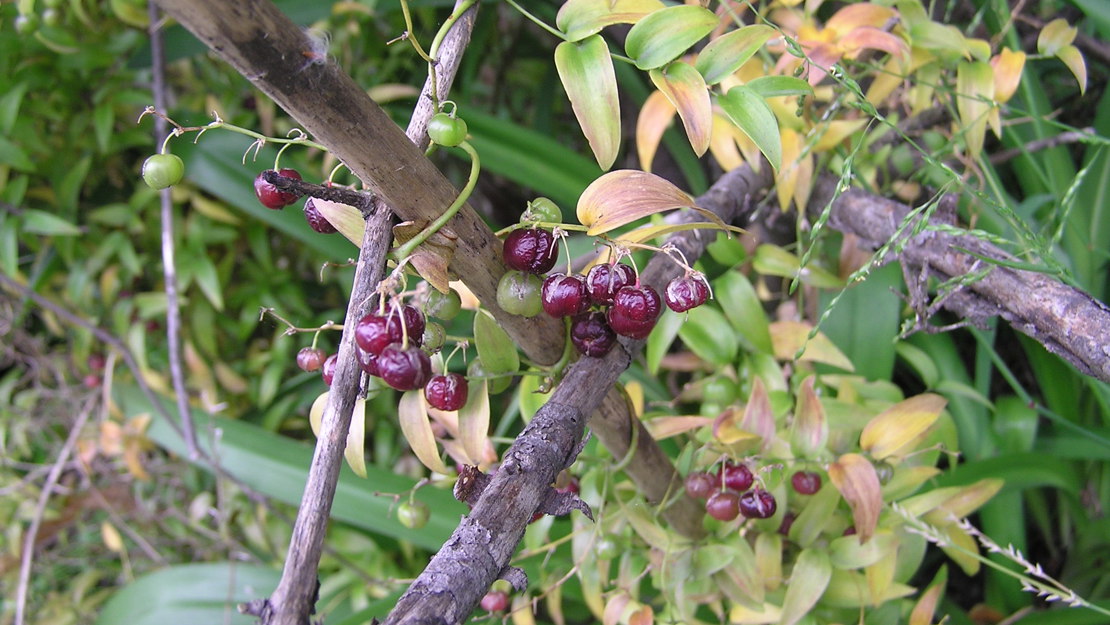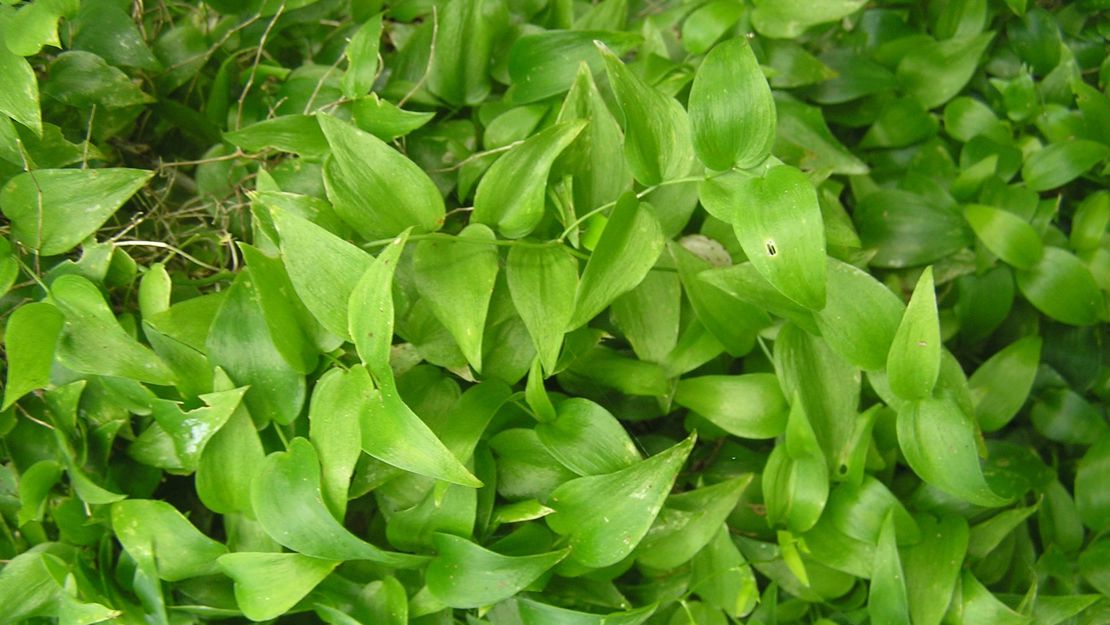Asparagus asparagoides
Smilax
Family: Asparagaceae
Origin: South Africa

Regional Pest Management Plan (RPMP) status
- Aotea — Progressive containment
- Whole region — Sustained control
- National Pest Plant Accord Species
General description
Scrambling or twining perennial herb < 3 m. Roots are densely clustered, white, fleshy and tuberous. Stems are thin, twisted, wiry and branched. Leaves are broadly oval, pointed and < 35 x 15 mm. Flowers are green/white and borne in July – August. Fruits are round, red berries.
What you need to know
To help protect our environment:
- You must not breed, distribute, release or sell smilax. As smilax is a National Pest Plant Accord species, these restrictions apply within the Auckland region and across the whole of New Zealand.
- You must not plant smilax within the Auckland region, unless you are transferring an existing plant on your land to another location within the boundaries of the same property.
- You must destroy any smilax on land that you occupy if it has been planted in breach of the above rules and you are directed to do so by an authorised person.
Auckland Council will manage smilax at all sites within the Aotea/Great Barrier Island group where it is known to occur.
If you see smilax anywhere on Aotea/Great Barrier Island group, please report it to Auckland Council at pestfree@aucklandcouncil.govt.nz.
Habitats
Disturbed forest, forest margins, wasteland, hedgerows, roadsides, coastal areas.
Dispersal
Seeds dispersed by birds. Vegetative spread from tubers, dispersed by soil and water movement.
Impact on environment
Forms dense stands, smothering low growing plants and seedlings. May obstruct access to recreational areas.
Control
Site Management
Cut and pull vines away from desirable trees and native plants before foliar spraying. Follow up treated areas 3 times per year. Encourage natural regeneration of native plants or replant treated areas where possible after 2-3 treatments to establish dense ground cover and minimise reinvasion.
Recommended approaches
Do not attempt to undertake control of this species on Aotea/Great Barrier Island group. Please report to Auckland Council if seen on Aotea/Great Barrier Island group.
Physical control
Method: Dig out.
Plant parts requiring disposal: Tubers, rhizomes and seeds.
Disposal options: Rot tubers, rhizomes and seeds in covered water barrel or remove to greenwaste or landfill.
Biocontrol
Check for the presence of agents:
Smilax rust (Puccinia mysiphylli) - Self-introduced.
For more information about how biocontrol works, see What is biocontrol?
Community agrichemical control recommendations
No qualifications: Foliar spray with 200ml glyphosate green per 10L of water.
Certified Handler/Experienced agrichemical user: Foliar spray with 200ml glyphosate green per 10L of water and 10ml penetrant.
Do not add penetrant when spraying against tree trunks.
Caution: When using any herbicide or pesticide please read the label thoroughly to ensure that all instructions and safety requirements are followed.




